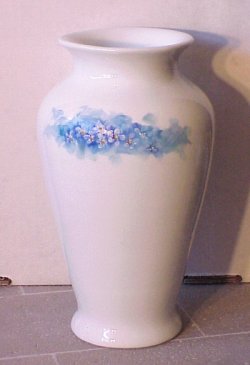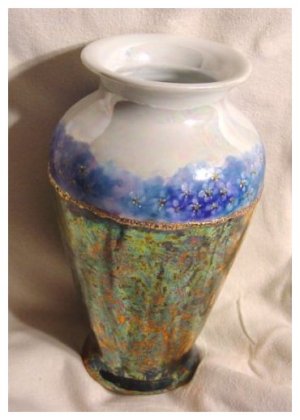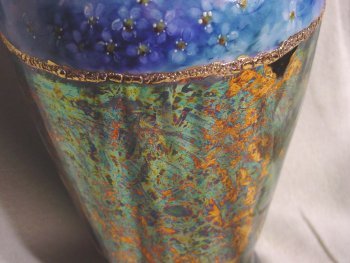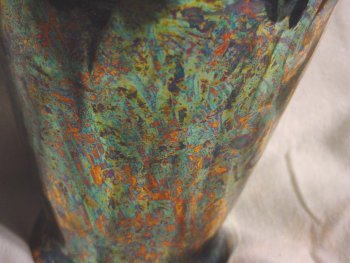|
BREAKING THE RULES!
By Marci Blattenberger
(originally published in the IPAT magazine 2002)
Rules! Rules! RULES!!! Doesn't it sometimes feel like every time you
pick up a paintbrush, there is another "you CAN'T do that" hangin'
over your head? It's enough to drive even a seasoned porcelain artist
bonkers.
I've always been a "wild child" with a tendency to do things
my own way for better or worse and I've discovered that , in a LOT of
cases, you CAN ignore the rules...or at least tapdance around them. A
good friend of mine, Ruby Gayle Jackson who started china painting at
the age of 10 in 1925, said to me: " I can do just about anything
until somebody tells me that it's not supposed to work and then, sure
enough, the next time around, it won't!" ( grin)
As porcelain artists, we have an extra added element (pun intended) in
our work: the firing process. ( I am thoroughly convinced that there is
a kiln elf who lives behind the elements and who runs out and repaints
everything as soon as I close the lid.) Let's face it: china painting
can be pretty unpredictable...what goes in is not necessarily what comes
out.....sooooo, why not stretch the limits from time to time?
Over the next few issues, I'm going to tell you about a few rules that
we porcelain artists tend to take as "gospel" and I'm going
to show you a few ways that you too can tapdance!
RULE 1: FIRE at 018 : Boy, has THAT
been drummed into our heads. We are so afraid of reds firing out that
we become timid about firing. The truth is that since the government has
mandated that our paint manufacturers lower the lead content in our paints,
we need to be firing a lot hotter than we do: 015 or 014 is a nice firing
range.
Try it! You will be rewarded with a shinier piece and clear, beautiful
color. If you are having problems with your reds firing out at these temps,
then simply re-apply them on the last fire and refire at a lower temperature.
I even fire my lusters and gold at 015 (another rule broken) . I sometimes
will get a different color from an 018 firing of that luster but in exchange,
I get a very sturdy luster (not the "oooh-be-careful-don't touch
it" delicacy we've come to expect from lusters)...and I also get
a glorious shine.
|



